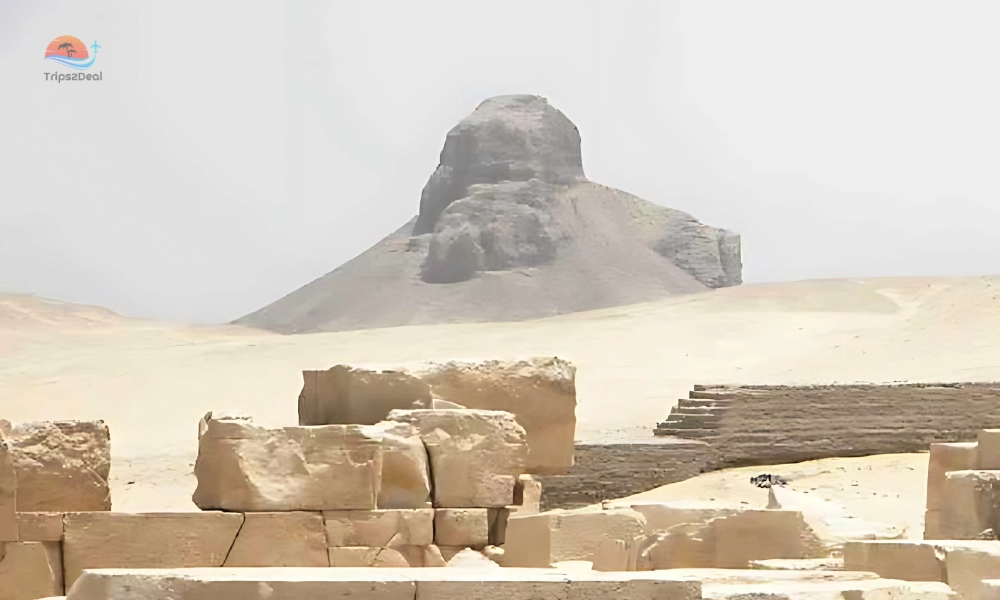Blogs

Pepi I Pyramid Complex
The Pyramid Complex of Pepi I South Saqqara is one of those few features that still remind us of current developments that took place in architecture and religion during the Second Dynasty in Egypt. The complex was built at the end of the 24th/23rd century BCE, not only to place the mummy of Pharaoh Pepi I, but also to become a major center of the royal cult and religion.
Table of Contents
History and Place
Pepi I, or Pepi Meryre, himself was a pharaoh that succeeded his father, Teti, who also brought about the Sixth Dynasty. The stability, which existed during more than 40 years of his reign, could be summarized and characterized by the fact that the power and Egyptian interests became a heritage. The choice of building his pyramid complex in South Saqqara, some 2.4 km north of the pyramid of Djedkare Isesi, may have been determined by several reasons, such as the handy space available and the willingness to put some distance between the royal necropolis and the emerging urban centre of Memphis.
Architectural Features
The pyramid of Pepi I was constructed using orthodox methods that were those of the Old Kingdom. The interior of the pyramid was the centre piece of the construction and consisted of six steps of blocks made of limestone that were enclosed with white limestones. The pyramid was initially about 52.5 m tall and on each side about 78.75 m wide. It is very much in keeping with the standard Old kingdom form, with certain of the standard elements:
- Valley Temple: Valued as a transportation of the pharaoh, this temple was created on the bank of the Nile.
- Causeway: A roofed walkway that joins the valley temple and the mortuary temple together with reliefs and inscriptions in abundance.
- Mortuary Temple: It is located at the foot of the pyramid, it consisted of statues and text praising the dead king.
- Cult Pyramid: This is the smaller pyramid to the south which was most likely where rituals were conducted.

Spiritual meaning of Pepi I Pyramid complex
The Pyramid Complex of Pepi I shows the shift in the course of the religion of Ancient Egypt. The Pyramid Texts comprise over 2,200 lines and feature, without fail, the religious journey of the pharaoh to his afterlife. The fact that he added at least nine smaller pyramids that should symbolize his queens went to show the enhanced participation of the royal women in the religious rituals. This elaborate reaffirms the connections between divine kingship and family and religious ideology in maintaining cosmic order.
The Pyramid texts
The most significant thing about the pyramid complex of Pepi I is the wealth of Pyramid Texts found within. These are the earliest religious writings ever to be known in ancient Egypt and they consist of over 2,200 lines of inscriptions in hieroglyphics. These were meant to assist the pharaoh in the afterlife making him an effective being (ankh) and gaining him a place among the gods.
On the walls of the burial room, the antechamber, and the halls are the texts with such topics as the royal ascension to the sky, his marriage to the sun god called Ra, and his eternal safety. In particular, the books employ painted hieroglyphs in the color green, which alludes to regeneration and rejuvenation.

Queens' Pyramids
As well as the main pyramid of Pepi I, there are other smaller pyramid in the area around dedicated to Pepi's queens and other royalty. By 2017, there had been nine identifications of such pyramids, of queens such as Nebuunet, Inenek-Inti, Meritites IV, Ankhesenpepi II, and Ankhesenpepi III, among others.
These smaller pyramids have similar architecture to the big pyramid although they tend to include their own Pyramid Texts. Such texts in queens pyramids are relevant since they indicate the change in religious traditions and the rise of queens in the royal cult in the Sixth Dynasty.
Artifacts and ongoing research
The Pyramid Complex of Pepi I is one of the places that have been highly excavated through the French/Franco-Swiss archaeological teams in Saqqara. These current archaeological explorations have given us invaluable information on how it was constructed and what people practiced in those days in relation to religion.
Many inscriptions, sculptures and other architectural structures have been discovered, and they have given an insight on what cultural and spiritual life looked like during the ruling of the Pharaoh Pepi I. The findings further broaden our knowledge above ancient Egyptian architecture and their religious practices.
Conclusion
The complex of Pyramid of Pepi I is a great success in ancient Egyptian construction and beliefs. Its complex organization, its extensive inscriptions, and its relation to a royal cult testify to its place in early Egyptian history. Additional archeological research is likely to contribute to a better understanding of this great complexity and its role in the life of Egypt of the centuries that are covered by this complexity





